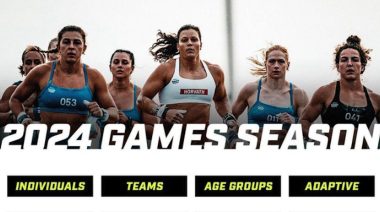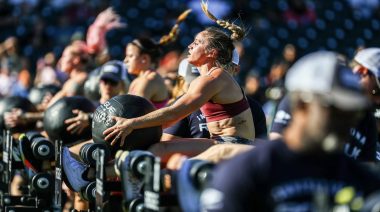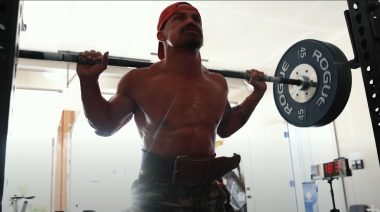Weightlifting will stunt your growth. This statement always follows youth athletes as they begin to weight train. But the real question remains if this is true or not, and the answer is no. What can stunt a child’s growth are coaching mistakes, lack of education, human error, not understanding movement patterns or mobility, and injuring a child. That can stunt their growth, not weightlifting. Weight training is one of the safest things a young athlete can do when taught correctly, having only a 0.0035% injury occurrence rate according to USA Weightlifting. Like everything it all comes down to knowledge and the application of that knowledge. In fact strength training adolescents correctly can actually lead to quite the opposite of stunting their growth.
In the Essentials of Strength and Conditioning Volume 3written by the National Strength and Conditioning Association, they talk about the use of multi-joint movements in child resistance training programs. Through various studies they offer proof that multi-joint movements can in fact increase ones HGH and testosterone levels. “Growth hormone is important to the normal development of a child and appears to play a vital role in adapting to the stress of resistance training.” In addition, they talk about the effect of resistance training in terms of testosterone levels with both young boys and girls. In their research they found multi-joint movements to increase the acute serum testosterone concentrations in boys. “More advanced resistance exercise programs for younger children have become acceptable in both the scientific and medical communities. Such programs may be effective in causing changes in testosterone secretion patterns in boys.” Although, an increase in serum testosterone levels was not found in adolescent females, an increase in total free testosterone was, which correlated in overall force production improvements.
With these factors being evident, who is to say that adolescent athletes performing multi-joint movements like squatting, cleaning, deadlifting, jerking, and snatching won’t receive these benefits? If an athlete is taught how to do these movements correctly, through a proper strength and conditioning program, they will have no choice but to activate these factors in their bodies therefore assisting in their growth and overall physical development. These ideas definitely challenge the whole “stunt your growth” concept. However, like any athlete learning how to lift they have to be taught correctly.
Teaching proper technique to an athlete requires much attention to detail and great patience. The athlete not only has to focus and keep their patience but the coach has to at all time as well. Neither person has to be willing to settle for mediocrity especially in the early lifting phases. When an athlete is starting off they must be made aware of the undertaking they are about to take part in. Making sure that movements are done perfectly before moving on is extremely important.
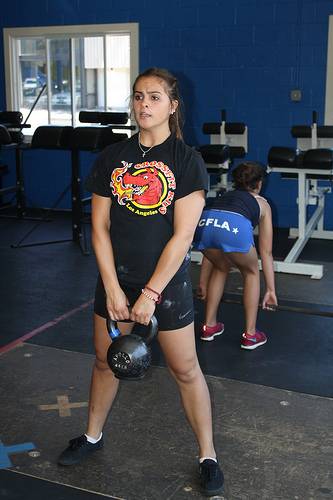 A good place to start is by introducing some basic multi-joint movements such as the front squat, pull up, dumb bell Romanian deadlift, and dumb bell bench press and then to supplement these movements in order to build additional control for current and future movements. Like most lifting programs the eventual goal is to get an athlete stronger. In order to do this you are eventually going to implement advanced multi-joint lifts such as the clean, jerk, snatch, and deadlift along with several squat variations into training. These movements should be the eventual goal of any proper strength training routine, but you have to start somewhere.
A good place to start is by introducing some basic multi-joint movements such as the front squat, pull up, dumb bell Romanian deadlift, and dumb bell bench press and then to supplement these movements in order to build additional control for current and future movements. Like most lifting programs the eventual goal is to get an athlete stronger. In order to do this you are eventually going to implement advanced multi-joint lifts such as the clean, jerk, snatch, and deadlift along with several squat variations into training. These movements should be the eventual goal of any proper strength training routine, but you have to start somewhere.
Teaching the basic movements such as the above mentioned and further supplementing additional movements to aid in development like the dumb bell press, dumb bell row, and dumb bell split squat attached to a well thought out abdominal plan can really help an athlete build those stabilizer muscles needed when doing advanced multi-joint movements in the future. Once an athlete has mastered these concepts, you can progress them to learning additional movements like the back squat, dead lift, push jerk and kettlebell swing. In addition you want to continue to still do the movements from the first phase by adding simple adjustments to some. This can be the addition of weight, using more advanced supplemental movements, like turning your split squat into a front lunge or by adding a bar bell into training in place of a dumb bell.
In my training of adolescent athletes, I like to go over proper bar placement in the squat in detail with my athletes. I use the front squat as a method of teaching the proper rack position in the clean, the back squat to teach the bottom position of the snatch, and the deadlift to teach the proper first pull position for the Olympic lifts. However, I am a big fan of the hexagon bars to teach adolescents how to deadlift, as these bars distribute the weight more evenly, eliminating most of the low back from the lift. This puts the athlete in a better squat position, therefore continuing to work the proper squat position but through a different method.
I like to institute the kettlebell swing as a way of teaching triple extension, as I find it a good means to teach an athlete how to extend their hips, not lean backwards, a common mistake that can lead to a low back injury. In addition, introducing plyometric exercises such as squat jumps and box jumps are additional ways to help teach proper triple extension and body awareness. What is also nice about these is as an athlete develops you can further adjust the plyometric movement adding height to the boxes, throwing in a hurdle or obstacle to jump over, and eventually doing depth jumps to further teach an athlete how to land with control.
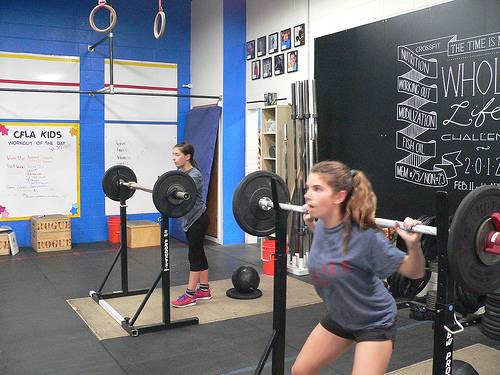 Once these movements are mastered, you can begin to teach the jerk, overhead squat, and high pull. From here it is just a waiting game making sure the athlete is continuing to pay attention to detail before you can begin to teach the clean and snatch. However, due to the fact that you have spent so much time teaching technique, that athlete can now pick up these advanced movements with greater ease. They clearly should understand how to do the various squats, therefore understanding the catch positions for the lifts. Mix this with a solid understanding of the high pull and putting the lifts together should come naturally.
Once these movements are mastered, you can begin to teach the jerk, overhead squat, and high pull. From here it is just a waiting game making sure the athlete is continuing to pay attention to detail before you can begin to teach the clean and snatch. However, due to the fact that you have spent so much time teaching technique, that athlete can now pick up these advanced movements with greater ease. They clearly should understand how to do the various squats, therefore understanding the catch positions for the lifts. Mix this with a solid understanding of the high pull and putting the lifts together should come naturally.
Now this sounds all well and good and may seem like common sense to many but I would not be writing this if it was. In mentioning these movements, I do not mention weight, percentages, or rep counts because to be honest, weight is not really all that necessary. These movements can be taught with wooden dowels that can eventually turn into 15 kg bars, then 20 kg bars, etc. Technique, age, as well as the strength and size of the athlete will eventually determine the weight needed. Rep count should stay relatively high around 8-10 reps a set.
Look at it as practice. The more reps your students do, within reason, the more practice they get at doing the movement. Don’t look at set and reps in terms of load as you would normally do when training an adult. Look at it purely from a teaching perspective. How many reps will help my young athlete learn the movement most effectively? That is really it. If the child’s form begins to break down stop, rest is key. You must constantly be stressing technique and not be afraid to go back a step or two when needed. Youth athletes are little sponges with enough practice and attention to detail they will pick up the movement. The younger the athlete is will also have an impact in where you start them.
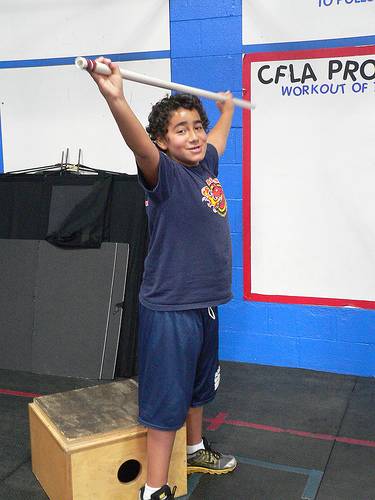 Although the majority of adolescents can start off where I mentioned, some may not be ready for this or may be pre-adolescent. In this case you can still teach them all these things but on a smaller scale using body weight as a way to teach control and technique. In accomplishing this task it is important to make sure the athlete masters the air squat, push up, pull up, sit up, and burpee first before moving to the more advanced movements. I list the burpee because it is a tremendously efficient multi-joint body weight movement perfect for developing young athlete’s neuromuscular systems. However, it is perfectly foreseeable that some may have trouble picking up these movements. This is normally due to one underlying factor, mobility. Children develop at different rates and it is up to us as coaches to go back to the drawing board for that athlete as each hurdle arises. Throw in hip mobility for athletes with squatting issues or shoulder mobility for athletes with shoulder development issues. Teach proper foam rolling and self-maintenance techniques to all your young athletes and this will help further speed the learning curve and help prevent injury. Once these basic movements are mastered and the athlete can demonstrate command over his/her body weight it is okay to move on.
Although the majority of adolescents can start off where I mentioned, some may not be ready for this or may be pre-adolescent. In this case you can still teach them all these things but on a smaller scale using body weight as a way to teach control and technique. In accomplishing this task it is important to make sure the athlete masters the air squat, push up, pull up, sit up, and burpee first before moving to the more advanced movements. I list the burpee because it is a tremendously efficient multi-joint body weight movement perfect for developing young athlete’s neuromuscular systems. However, it is perfectly foreseeable that some may have trouble picking up these movements. This is normally due to one underlying factor, mobility. Children develop at different rates and it is up to us as coaches to go back to the drawing board for that athlete as each hurdle arises. Throw in hip mobility for athletes with squatting issues or shoulder mobility for athletes with shoulder development issues. Teach proper foam rolling and self-maintenance techniques to all your young athletes and this will help further speed the learning curve and help prevent injury. Once these basic movements are mastered and the athlete can demonstrate command over his/her body weight it is okay to move on.
It is important to realize these phases of development can take some time. Some athletes may pick things up quickly, and move along on the monthly basis, while others may take several months to develop. It all comes down to the athlete and where they are at physically and mentally. It really just comes down to that athlete and their own development, no one else.
In conclusion, working with adolescent athletes is a privilege that can be extremely rewarding. One of the main reasons is that you literally get to watch an athlete develop in front of your eyes. It’s clearly more apparent in younger athletes than it is with older ones. You will notice changes in their height, posture, stature, and overall demeanor. Youth athletes tend to have little to no egos and will bust their butts especially when they begin to see results. However, it all comes down to proper coaching. Adolescent strength coaches must pay attention to detail and create a well thought out plan of attack. They must think of themselves as aids in that particular child’s overall development and never get ahead of themselves. If they do this they will have a very rewarding experience.
Photos provided by CrossFit LA.

